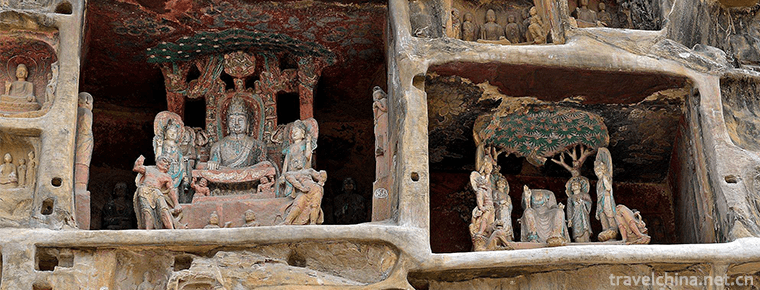Nanyin Rap
Nanyin Rap
Nanyin rap is a form of rap sung in Guangzhou dialect. It is also a common melody in Cantonese opera and Cantonese opera. It is said that Nanyin rap was developed on the basis of wooden fish and dragon boat by absorbing the melodies of Yangzhou Tanci (Wusheng) and other melodies. In order to distinguish Nanyin from Wusheng outside Guangdong, it is named Nanyin (Southern Tune). Nanyin rap is the third batch of national intangible cultural heritage in Macao Special Administrative Region.
On May 23, 2011, the "Nanyin Rap" declared by the Macao Special Administrative Region was listed in the third batch of national intangible cultural heritage list with the approval of the State Council.
historical origin
Dishui Nanyin - In the early 20th century, the main performance venues of Nanyin were private residences, restaurants, streets and brothels. Most singers are blind artists, also known as Qu Shi, Qu Ji or Shi Niang. At the beginning of the 20th century, Dishui Nanyin was absorbed into Cantonese opera and Cantonese opera music, and became "Tainan Yin" and "Nanyin of Cantonese Opera". In the late 1970s, the traditional Dishui Nanyin almost became a dead song, while the Tainan and Cantonese opera Nanyin are still used by composers.
artistic characteristics
type
Nanyin can be roughly divided into two categories: Dishui Nanyin and Tainan Yin.
"Geshui" is a divination term. Guangdong calls the blind "Ashui", so the Nanyin sung by the blind is called "Geshui Nanyin".
Dishui Nanyin was absorbed into Cantonese opera and Cantonese opera music and became "Tainan Yin" or "Cantonese opera Nanyin".
Musical Instruments
Southern musical instruments include Qinqin, Coconut Hu, Xiao, Sanxian, Zheng and so on.
The commonly used accompaniment instruments of Dishui Nanyin are Zheng, Xiao, Coconut Hu, Qin Qin, Yangqin and clapper, while the number of accompaniment instruments is usually no more than five.
Music
Nanyin is more musical than wooden fish and dragon boat, so there are many opportunities for Nanyin to appear on the stage as an independent type of music. Nanyin's sentence pattern and rhyme are quite strict. It has accompaniment, Allegro and door-crossing music. Its melody is graceful and graceful. It has a strong local color of Nanguo. The early Nanyin's range of singing is mostly among literati and refined scholars, and the traditional works are mostly works of grieving the Spring Festival and dreaming.
Inheritance and Protection
Peng Liyuan praised "Nanyin Rap"
On December 20, 2014, Chinese President Xi Jinping's wife Peng Liyuan, accompanied by the Chief Executive of the Macao Special Administrative Region, Mrs. Cui Shian and Mrs. Huo Huifen, visited Zhengjia House, a part of the world material and cultural heritage in Macau. She also enjoyed the "Nanyin Rap" aria brought by the famous Cantonese opera artist, Junxiang, in Zhengjia House.
At Zheng's house, Peng Liyuan stopped to watch the history of Zheng's house and its structure. Subsequently, accompanied by Ho Huifen, Peng Liyuan came to a living room of Zhengjia Dawu to enjoy the performance of Nanyin Rap brought by Junxiang, a famous Cantonese opera family in Macao. Zou Junxiang is a well-known folk artist who founded the Yueju Opera Art Club in Zongxiang, Macao.
Nanyin rap is a kind of music that is sung by blind people telling stories. It was once popular in Macao in the 1950s and went deep into the folk. Nanyin Rap was listed in Macao's intangible cultural heritage list in 2009 and in the national intangible cultural heritage list in 2011.
During the interval, Peng Liyuan tasted tea with the people present. After the performance, Peng Liyuan said that Zou Junxiang's voice was loud and melodious, and she hoped that he would inherit more Chinese culture.


-
Taer Temple Scenic Area Xining City
Tar Temple, also known as Tar Temple, was founded in the 10th year of Hongwu Ming Dynasty (1377). Named after the Great Silver Pagoda built in memory of Zongkaba, the founder of the Yellow Religion.
Views: 125 Time 2018-12-12 -
Qianfoya Scenic Spot
Guangyuan Qianfoya is the largest grotto group in Sichuan Province. The statues of cliffs began in the Northern Wei Dynasty. After nearly 1500 years, the cliffs, which are 45 meters high and 200 meter.
Views: 112 Time 2018-12-26 -
Guan Tang hot spring
Guantang Hot Spring is located in Tangtou Town, Linyi City, Shandong Province, on the East Bank of Yihe River. The hot spring covers an area of nearly 260 Mu and has a construction area of 100,000 squ.
Views: 193 Time 2019-01-13 -
Jindian Scenic Spot
Kunming Golden Palace Scenic Spot, also known as Tongwa Temple, is made of brass and shines in the sunshine, reflecting the golden brilliance of Cuigou Youlin.
Views: 161 Time 2019-01-22 -
Jinjiang Amusement Park
Jinjiang Paradise is the first large-scale modern amusement park in Shanghai, China. It covers an area of 170 Mu and has 40 amusement projects. It is suitable for tourists of all ages. It receives abo.
Views: 203 Time 2019-01-29 -
Longsha Park
Located in the center of Qiqihar city, Longsha Park has a history of one hundred years. It covers an area of 64 hectares, including 20 hectares of water..
Views: 149 Time 2019-02-06 -
Mogao Grottoes
Mogao Grottoes, commonly known as Thousand Buddha Caves, are located in Dunhuang at the western end of Hexi Corridor. It was built in the pre-Qin period of the Sixteen Kingdoms..
Views: 245 Time 2019-02-07 -
Shaanxi History Museum
Shaanxi History Museum, China's first large-scale modern national museum, the first batch of China's "AAAA" class tourist attractions, known as the "ancient capital pearl,.
Views: 142 Time 2019-02-08 -
Traditional flower arrangement
Chinese traditional flower arrangement art has a long history, extensive and profound, is the representative of Oriental flower arrangement art. It has the characteristics of dignified and elegant mod.
Views: 113 Time 2019-04-19 -
Fengxiang Wood Engraving New Year Picture
Woodblock New Year Painting is a traditional folk art form with a long history in China. Fengxiang Woodblock New Year Painting is a major school of Chinese traditional folk New Year Painting..
Views: 212 Time 2019-04-29 -
Wharf song
The dock number is a traditional folk song in Shanghai. Singing in docks, cargo yards, loading and unloading, lifting, push and pull and other labor occasions. The main singing methods of wharf number.
Views: 97 Time 2019-05-16 -
Empress Dowager Ci Xi
Ci Xi (November 29, 1835 - November 15, 1908) is the queen of Xiao Qin chin. Yehiel Bernard La Shi, Xianfeng Emperor Concubines, Tongzhi Emperor The birth mother. Important in late Qing Dynasty Politi.
Views: 251 Time 2019-09-07











